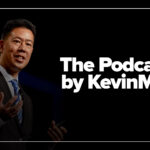In January 2022, the United States Medical Licensing Examination (USMLE) Step 1 transitioned to a pass/fail format, sparking debate over how best to assess physician competence in an era where medical misinformation proliferates online. Although medical students loathe any mention of exams, we cannot deny that licensing exams are an important barrier to ensure baseline knowledge, and to prevent quacks and snake-oil salesmen from harming the public. This article explores the evolution of medical licensing, from its precursors in ancient China to its pivotal development under Islamic governance and subsequent transmission to Europe and the Western world.
Ancient China
The concept of evaluating medical practitioners began nearly 2,500 years ago. In China’s Qin Dynasty, medical professionals were selected via the civil service exam, and assigned positions in the state bureaucracy based on their knowledge and skills. Later dynasties continued this meritocratic approach, which laid the foundations for modern licensing.
The Abbasid Caliphate: a foundational moment
The first recorded instance of a standardized exam specific to medical professionals occurred in the Abbasid Caliphate in Baghdad. A patient’s death due to physician error prompted Caliph Al-Muqtadir to address the absence of oversight in medical practice. He tasked his chief physician, Sinan ibn Thabit ibn Qurrah, with establishing a system to verify practitioner competence. Sinan’s response was transformative: Within the first year, over 860 physicians in Baghdad faced rigorous examinations, with 160 failing to meet the required standards and thus losing the privilege of practicing medicine.
This initiative marked the inception of mandatory licensing in the Islamic world. Examinations were standardized and administered across the caliphate (a huge territory stretching from North Africa to Afghanistan) with official governmental oversight. The system aimed to eliminate unqualified practitioners—often derided as “quacks”—and standardize care, reflecting a public health priority that parallels modern regulatory goals.
The licensing process: structure and continuity
The Abbasid licensing process was strikingly comprehensive. Candidates underwent oral and practical examinations conducted by senior physicians, who evaluated their mastery of medical texts, clinical acumen, and ethical judgment. Successful candidates swore the Hippocratic Oath, a practice codified in Islamic medical ethics by figures like Al-Razi (Rhazes), whose writings emphasized professional integrity. Upon completion, they received a formal license (ijaza), granting legal permission to practice. This tripartite structure—examination, oath, and certification—mirrors the sequence of modern medical credentialing, underscoring its enduring influence.
Transmission to Europe: the role of Arab Sicily
The Abbasid model extended beyond the Islamic heartland, notably through Arab rule in Sicily. During this period, Sicily became a center of medical education, with institutions teaching Arabic medical texts and hospitals providing structured care. Following the Norman conquest in the mid-12th century, these traditions persisted. The Norman King Roger II issued a decree mandating that physicians pass an examination to practice—the first edict of its kind in Christian Europe. This policy, documented in Norman legal records, bridged Islamic and European medical governance, leveraging Sicily’s position as a cultural crossroads.
Frederick II and the Constitutions of Melfi
The legacy of Islamic medical regulation reached a zenith under Frederick II, the Hohenstaufen king of Sicily. In his Constitutions of Melfi, Frederick mandated that physicians pass a public examination supervised by the masters of the School of Salerno, Europe’s first medical university. Candidates were required to complete a five-year curriculum, including a year of supervised practice, before sitting for the exam—a precursor to modern residency and board certification. This formalized system spread to universities in Bologna, Paris, and Montpellier, embedding licensing into European medical education. These systems of medical pedagogy gradually spread to major universities throughout continental Europe such as those in France and Spain, ultimately setting the stage for the development of the modern medical licensing system that we use in Western countries today.
Conclusion
Spanning the Qin Dynasty, the Abbasid Caliphate, and medieval Europe, medical licensing has long aimed to ensure competence and protect patients. Today, the USMLE Step 1 pass/fail shift fuels debate over maintaining rigor amid rising medical disinformation—underscoring that robust standards remain essential to counter falsehoods and uphold trust in the profession.
Aamir Hussain is a dermatologist.






















![Catching type 1 diabetes before it becomes life-threatening [PODCAST]](https://kevinmd.com/wp-content/uploads/Design-2-190x100.jpg)
